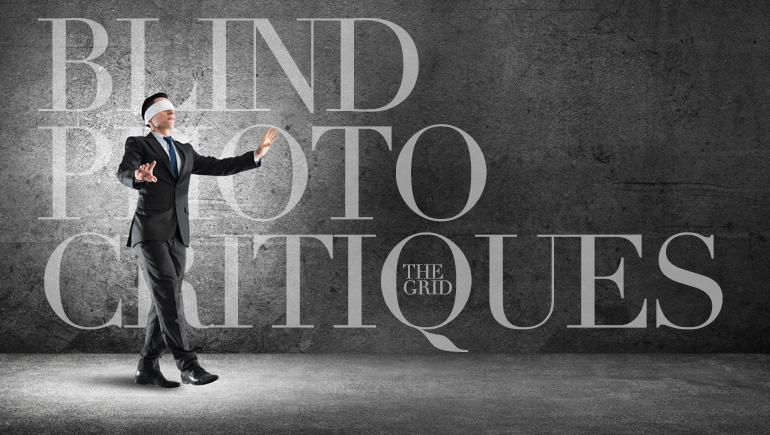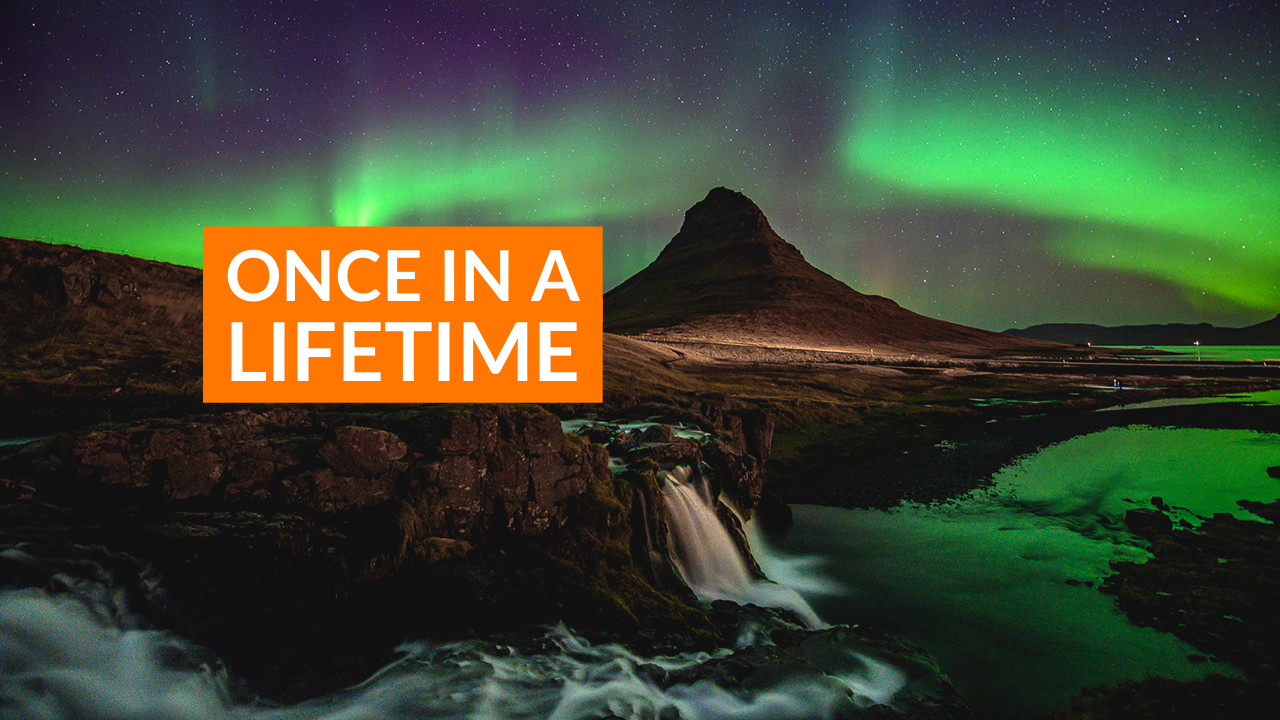
There’s been some discussion recently from people who have submitted images to “The Grid” (our live weekly photography talkshow) for our “Blind Photo Critique” episode.
It’s a blind critique in that we don’t reveal the photographer’s name whose work we’re critiquing (and we don’t even know their name). The reason we do this is so we can give an honest critique without publicly embarrassing the photographer who submitted their work.
It’s hard to get an honest opinion of your photography because often the people we’re showing our work to are our friends, or family, or co-workers who don’t want to hurt your feelings. They’re often not serious photographers themselves, so they’re not looking at them with the critical eye of a photographer. They’re looking at it like they’re your friend who likes pictures. You’re not going to get any of those folks to tell you, “You know, Bill — you’re just not very good.” It’s not going to happen, so that’s why it’s so important that things like blind critiques exist.
It’s not called “Blind Praise.” It’s a “Blind Critique”

Some people who submit their images for critique aren’t really submitting them for an actual critique. They are convinced the shots they’re sending are great, so what they’re really looking for is public recognition of their great photography, and if we point out anything wrong with their work, they’re angry. Friends and family members, and even folks in their local photo club told them they they liked these shots, so how could we have criticized them like we did? Because finally, somebody is telling them the truth.
I guess what they should say when submitting their images, is, “Here are my images for your blind critique. I think they’re really good, but if you don’t agree, I do not want to hear that, and I won’t accept it, so please only critique them on air if you think they’re really good and want to heap praise on me.”
Luckily, most of the folks who submit their images are doing it for the right reasons. They want to get better at their photography, and they’re looking for advice on making better images. We get emails all the time from people who have been critiqued, and there were some serious problems with their images, but they take the critique in the spirit it was delivered, and they tell us they now have a clear path forward with their work. They often resubmit images after they’ve addressed the issues we pointed out during the critiques, and their new images are literally night and day improvements over their previous work, and that is a home run for everybody! Erik and I are thrilled when see see them taking that advice, and creating better images. That’s really what the episode is about — helping photographers make better images, so you can imagine how happy that makes Erik and me, seeing that the critiques really made a difference.
If this isn’t what you’re looking for, don’t send them in
It’s a critique. Our job is to evaluate the image from a technical standpoint (is it in focus, is the exposure correct, does the light look good, and so on?) and from an impact and emotional standpoint. Does it make us say “wow” or “oooohhh!” or create any time of response, other than “meh?”
Oftentimes, the problem we see isn’t a technique one. The photographer understands their camera and exposure and all that type of stuff. They’re just making boring images. They’re creating images that are technically correct but have no chance of making someone say, “Wow!” No chance of moving someone emotionally, or telling an interesting story through their image, or getting a response of any kind. Their images have no ‘soul.’
They’re not “working” to make great images. They’re just shooting what’s in front of them. Taking a photo of a coffee cup and putting the background out of focus, doesn’t make it a great shot. We’ll all seen coffee cups. Yawn. I talked about this very topic — why it takes work to make interesting shots, in a post just a few weeks ago (you can read it here).
Now, sometimes we get images that are so good, Erik and I can only say, “These are awesome — just keep doing what you’re doing,” but most of the time, there are a lot of things the photographer can do, from composition to lighting to choice of subject or in the post-processing stage that would make a big difference, and we point those out. If that’s not what you’re looking for, don’t send your images in for a blind critique. If you can’t take criticism and don’t want to hear what’s wrong, there’s an easy solution – don’t send ’em in for a critique.
Your Back Story Doesn’t Matter
One thing we sometimes hear is that we didn’t like the photo because we didn’t know the backstory behind the image. That’s why we didn’t appreciate the image for how awesome it is. Here’s the truth — your backstory only makes the photo better to you — no one else. You see an image taken on a perfect day — it was cool and breezy that night, and it was your birthday, and you were with your finance walking hand in hand on the beach. Everything was just perfect, and you see and feel all this when you look at that photo, but what I see is another dock at sunset shot like every other dock at sunset shot, but maybe not as good.
I’m not 100% on who said this, but I believe it was Jay Maisel who once said (I’m paraphrasing here):
“Your image has to stand on its own. If it’s hanging in a gallery, you’re not going to be standing beside it to tell everyone who comes by that’s it’s really better than it looks because of what it means to you or what went into making it. You shouldn’t have to explain it. It’s either a good photo, or it’s not.”
— Jay maisel (i think)
The Value Of The Truth
Over the years, I’ve been very fortunate to have my work critiqued by some of the top pros in our industry. When I sat down for my critiques, I told them to give it to me straight. I wanted to hear the truth, and I told them not to sugarcoat or go easy on me because we’re friends. Let me tell you; they did not hold back. Ouch!
No one in the history of “The Grid” has ever endured the harshness of some of the one-on-one portfolio critiques I’ve received on my photography. I remember one where he looked me in the eye and said, “Are you serious? What the hell are you thinking? Why is this image in here?” My response was, “Well, it’s not in there any more,” and I removed that image (and a few more) immediately after the critique. They saw and pointed out problems in my images that I had totally missed, or didn’t even realize were problems.
While these critiques were brutally honest (that’s what I asked for) and, I had many cringe-worthy, and embarrassing moments throughout the critique experience, they were absolutely invaluable. I learned so much from them and I immediately changed a number of aspects of my photography from that point forward. I have to say that taking those critiques to heart moved me years ahead in my work. Years! Hard as they were to endure, they were some of the best, most important, most transformative things that ever happened to my photography.
When it comes to photo critiques, if you don’t have the right attitude going in — if you didn’t ask for a critique for the right reasons, what you’re left with is anger and frustration, and you don’t get any better. Your work doesn’t improve — instead, you dig your heels in, double-down, and complain about the critique and tell yourself that you’re right and the critiquer was wrong. How did that help you? How does that move you forward?
Learning From Other People’s Critiques
What’s cool about these critique shows is that even if it’s not your images being critiqued (and we hear this all the time), our viewers learn a lot from seeing these critiques and spotting similar mistakes they make in their work. They take those ideas and apply these suggestions to their photography, and their work moves ahead, even though they weren’t the one being critiqued, which is awesome.
Before you consider submitting images for a critique, ask yourself what you’re hoping to get from it. What are you expecting from the critique, and what are you prepared to do with what you hear during it? Depending on your attitude going into this, it can be an experience where you end up being angry and frustrated, or it could be a turning point in your photography — one that propels you and your work forward in a very real, tangible way. I hope you choose the latter.
Here’s to a great week — one where we all move forward with our work. :)
-Scott




1 comment